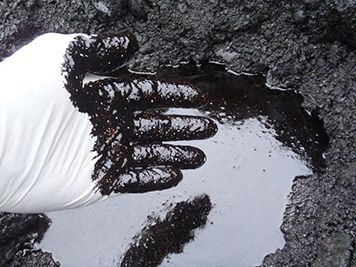Is the Oil Gone?
A casual observer would not likely see signs of the oil spill today in Prince William Sound. However, Exxon Valdez oil persists in certain habitats, especially in areas sheltered from weathering processes, such as in the subsurface under selected gravel shorelines and in some soft substrates containing peat.
Surface oil at our study sites had all but disappeared by 1992, three years after the spill, as the graph here illustrates.
However, there is still residual oil to be found. The remaining oil generally lies below the surface of the beaches in those places that are very sheltered from the actions of wind and wave (which help to break down and remove stranded oil), and those beaches where oil initially penetrated very deeply and was not removed. The fact that oil remains at all, over two decades after the initial spill, is of interest and is the subject of current studies funded by the Exxon Valdez Oil Spill Trustee Council.
The biological significance of the remaining oil is unclear and a source of controversy. Biomarker studies show that animals like sea otters and harlequin ducks continued to be exposed to hydrocarbons in Prince William Sound for two decades after the spill. However, the U.S. Geological Survey found that their populations returned to pre-spill levels based on data gathered in 2013. Widespread tissue elevations in invertebrates like mussels and clams are no longer observed, although isolated spikes may still occur.
 An official website of the United States government.
An official website of the United States government. 
